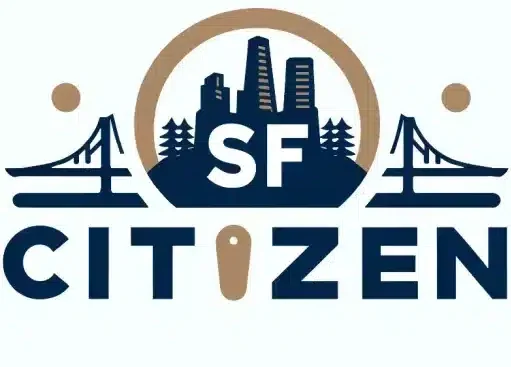San Francisco, the heart of the Bay Area, is a city renowned for its iconic landmarks, vibrant culture, and thriving tech industry. However, beneath the surface lies a complex network of infrastructure that keeps this bustling metropolis running smoothly. From the Golden Gate Bridge to the extensive public transportation system, San Francisco’s infrastructure plays a crucial role in shaping the city’s future.
In This Article
Key Points
- San Francisco faces unique infrastructure challenges due to its geography and rapid growth
- The tech industry, particularly Silicon Valley, has a significant impact on regional transportation and urban development
- Strategic capital investment is essential for shaping the future of San Francisco’s infrastructure
The Heart of Innovation: Silicon Valley’s Influence on Infrastructure
Silicon Valley, the global hub of technological innovation, has had a profound impact on San Francisco’s infrastructure. The rapid growth of tech giants like Google, Apple, and Facebook has driven advancements in digital infrastructure, transforming the way people live and work in the Bay Area. This tech boom has also contributed to the development of cutting-edge transportation solutions, such as ride-sharing services and autonomous vehicles.
However, the influx of tech workers has also led to gentrification and rising housing costs, putting pressure on the city’s infrastructure and livability. As San Francisco grapples with these challenges, it must find ways to balance the needs of its diverse population while embracing the opportunities presented by the tech industry.
Bridging the Bay: Transportation and Highway Infrastructure
The Golden Gate Bridge, an iconic symbol of San Francisco, serves as a vital link in the Bay Area’s transportation network. This marvel of engineering not only connects the city to Marin County but also facilitates the flow of goods and people throughout the region. However, as the population continues to grow, the bridge and surrounding highway infrastructure face increasing congestion and maintenance challenges.
To address these issues, San Francisco has implemented various strategies, such as the use of intelligent transportation systems and the promotion of alternative modes of transportation. By investing in the modernization and expansion of its highway infrastructure, the city aims to improve operational resilience and ensure the smooth flow of traffic across the Bay Area.
Underground Movements: Tunnels and Public Transportation
San Francisco’s extensive network of tunnels plays a crucial role in its transportation infrastructure. These underground passageways not only alleviate traffic congestion on the surface but also provide a reliable means of transportation for commuters. The city’s public transportation system, which includes the famous cable cars and the Bay Area Rapid Transit (BART), relies heavily on these tunnels to connect various neighborhoods and surrounding cities.
As San Francisco looks to the future, it must continue to invest in the expansion and modernization of its public transportation system. This includes upgrading existing tunnels, building new ones, and implementing advanced technologies to improve efficiency and safety. By prioritizing public transportation, the city can reduce its carbon footprint, promote livability, and ensure that its infrastructure remains resilient in the face of natural disasters.
Parking and Pedals: Addressing Parking and Bicycle Infrastructure
Parking infrastructure is a significant challenge in San Francisco, where limited space and high demand often lead to congestion and frustration for drivers. To address this issue, the city has implemented various strategies, such as the use of smart parking systems and the promotion of alternative modes of transportation, particularly cycling.
The growth of bicycle infrastructure in San Francisco has been a game-changer for the city’s transportation landscape. By investing in dedicated bike lanes, bike-sharing programs, and secure parking facilities, the city has encouraged more people to choose cycling as a sustainable and efficient means of getting around. This shift towards pedal power not only reduces traffic congestion but also contributes to a healthier and more livable urban environment.
The Green and the Grid: Environmental Sustainability and Smart Cities
San Francisco is at the forefront of environmental sustainability, with a strong commitment to reducing its carbon footprint and promoting green infrastructure. The city has implemented various initiatives, such as the use of renewable energy sources, the promotion of green buildings, and the development of urban green spaces. These efforts not only contribute to a healthier environment but also enhance the quality of life for residents and visitors alike.
In addition to its environmental sustainability goals, San Francisco is also embracing the concept of smart cities. By leveraging digital infrastructure and advanced technologies, the city aims to improve the efficiency and effectiveness of its services, from public transportation to waste management. This integration of technology and sustainability is crucial for ensuring that San Francisco remains a leader in urban innovation and resilience.
From Wharf to Wine: Tourism, Livability, and Infrastructure
San Francisco’s thriving tourism industry, with popular destinations like Fisherman’s Wharf and Alcatraz Island, puts significant pressure on the city’s infrastructure. To accommodate the millions of visitors who flock to the city each year, San Francisco must continually invest in the maintenance and improvement of its transportation, hospitality, and recreational facilities.
Beyond the city limits, the Napa Valley wine region also has a significant impact on regional transportation and infrastructure needs. As more people visit this world-renowned destination, the demand for efficient and sustainable transportation options continues to grow. By collaborating with neighboring counties and investing in regional infrastructure projects, San Francisco can ensure that its tourism industry remains vibrant and sustainable for years to come.
The Future Is Now: Alternative Futures and Urban Development
As San Francisco looks to the future, it must consider alternative scenarios for urban development and infrastructure planning. This includes exploring innovative solutions to challenges such as gentrification, housing affordability, and climate change. By embracing new technologies, such as autonomous vehicles and smart city systems, the city can create a more efficient, equitable, and sustainable urban landscape.
Strategic capital investment will play a crucial role in shaping San Francisco’s future. By prioritizing projects that promote livability, resilience, and innovation, the city can ensure that its infrastructure remains adaptable and responsive to the changing needs of its population. This forward-thinking approach to urban development will be essential for maintaining San Francisco’s position as a global leader in sustainability and quality of life.
Resilient and Connected: Operational Resilience and System Flow
Operational resilience is a top priority for San Francisco’s infrastructure planning. In a city prone to earthquakes and other natural disasters, it is essential to have robust systems in place to ensure the continuity of critical services. This includes investing in the hardening of infrastructure, such as bridges and tunnels, as well as developing contingency plans for emergency response and recovery.
Maintaining system flow is another key aspect of San Francisco’s infrastructure resilience. By implementing strategies such as intelligent transportation systems, demand management, and redundancy planning, the city can ensure that its transportation network remains functional even in the face of disruptions. Additionally, the use of interdiction techniques, such as security checkpoints and surveillance systems, can help safeguard infrastructure against potential threats.
FAQ
What are the major challenges facing San Francisco’s highway infrastructure?
San Francisco’s highway infrastructure faces challenges such as increasing congestion, aging bridges and roads, and the need for regular maintenance. The city is addressing these issues through the implementation of intelligent transportation systems, the promotion of alternative modes of transportation, and strategic investments in infrastructure upgrades.
How is bicycle infrastructure evolving in San Francisco, and what are its impacts?
San Francisco is actively expanding its bicycle infrastructure, with the development of dedicated bike lanes, bike-sharing programs, and secure parking facilities. This evolution is contributing to reduced traffic congestion, improved public health, and a more sustainable urban environment. As more people choose to cycle, the city is seeing positive impacts on its overall livability and quality of life.
In what ways is gentrification influencing San Francisco’s infrastructure?
Gentrification, driven in part by the growth of the tech industry, is putting pressure on San Francisco’s infrastructure and housing market. As neighborhoods experience rising costs and demographic shifts, the city must grapple with the challenges of ensuring equitable access to transportation, affordable housing, and other essential services. Balancing the needs of long-time residents with those of newcomers is a critical aspect of San Francisco’s infrastructure planning.
How are tech hubs like Silicon Valley affecting San Francisco’s public transportation?
The rapid growth of Silicon Valley and other tech hubs in the Bay Area has had a significant impact on San Francisco’s public transportation system. As more people commute to and from these centers of innovation, the demand for efficient and reliable transit options has increased. The city is responding by investing in the expansion and modernization of its public transportation infrastructure, including the BART system and the introduction of new technologies like autonomous vehicles.
What initiatives are being taken to ensure environmental sustainability in San Francisco’s infrastructure projects?
San Francisco is committed to integrating environmental sustainability into its infrastructure planning and development. This includes the use of renewable energy sources, the promotion of green buildings, and the incorporation of green spaces into urban design. The city is also investing in smart city technologies, such as sensors and data analytics, to optimize resource management and reduce its carbon footprint. By prioritizing sustainability, San Francisco aims to create a more resilient and livable urban environment for future generations.

